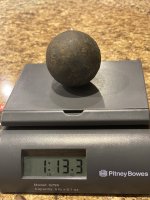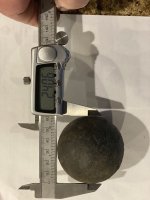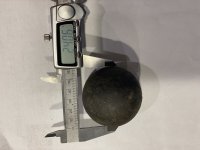tomtector
Greenie
- Aug 10, 2024
- 18
- 60
- Detector(s) used
- Garrett AT PRO
- Primary Interest:
- All Treasure Hunting
My son found this while snorkeling on the Wisconsin shore of Lake Michigan. I suspect it is a cannon ball but not certain because of its size.
Any help would be greatly appreciated!
Any help would be greatly appreciated!







